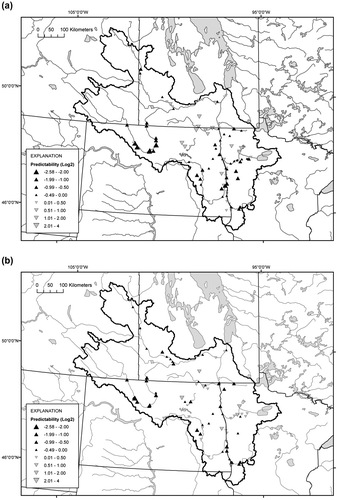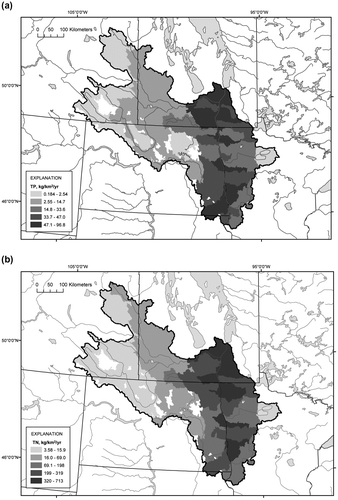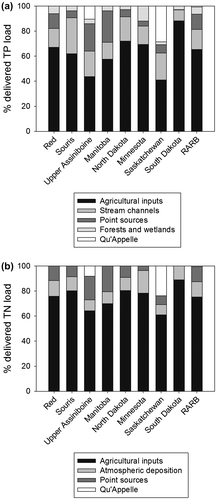Figures & data
Figure 1. Spatial domain of the Red—Assiniboine River Basin (RARB) SPARROW total phosphorus (TP) and total nitrogen (TN) models.
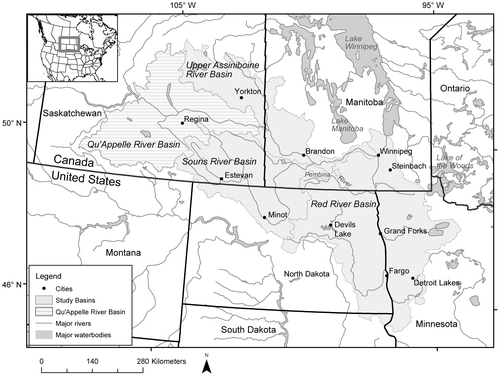
Table 1. Drainage areas and major land coverages for the areal extent of Red—Assiniboine River Basin (RARB) SPARROW models.
Figure 2. Major land coverages of the Red—Assiniboine River Basin (RARB) and the locations of calibration sites. Land cover data for Canada circa 2000 is derived from Natural Resources Canada Geobase, and for the US it is from 2001 National Land Cover Data. Red N (nitrogen) circles and orange P (phosphorus) circles show which parameters were sampled from particular water quality stations.
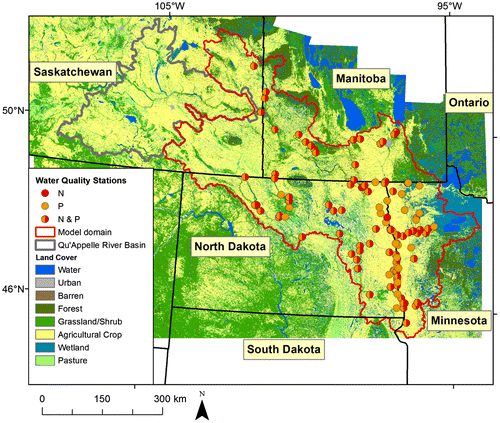
Table 2. Summary of Red—Assiniboine River Basin (RARB) calibration results for total phosphorus (TP) and total nitrogen (TN) SPARROW models. RMSE is root-mean square error.
Figure 3. Predictability of Red—Assiniboine River Basin SPARROW models for (a) phosphorus (TP) and (b) nitrogen (TN). Predictability is the difference between observed and predicted loads expressed in units of log 2, which represents the number of doublings of the measured loads at each site (i.e. over-predicted – negative values, upward pointing triangles; under-predicted – positive values, downward pointing triangles).
